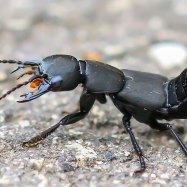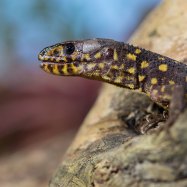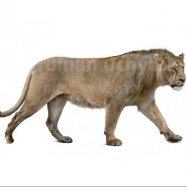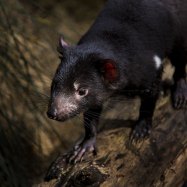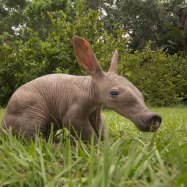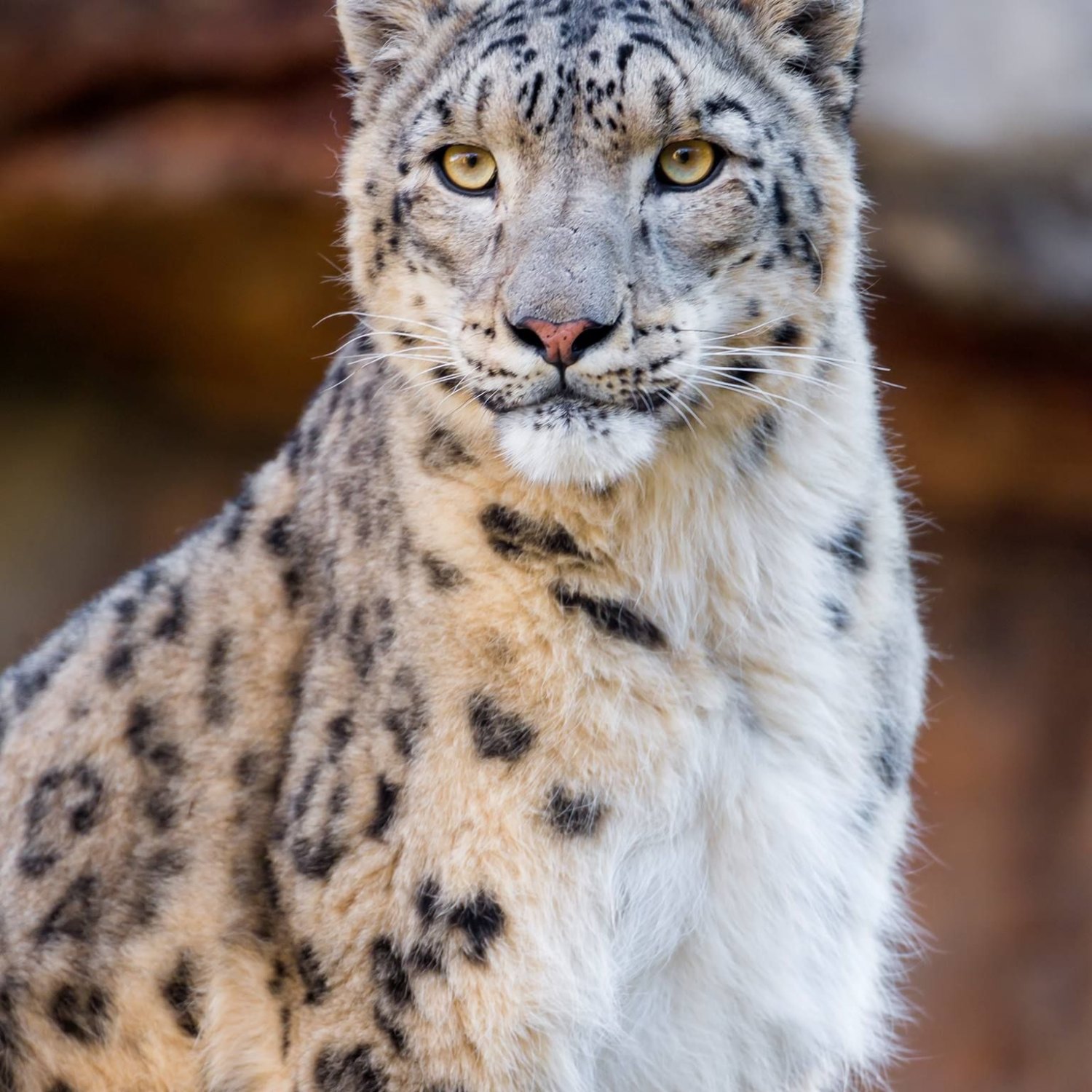
Snow Leopard
90 - 130 cm
The Snow Leopard, a majestic member of the Felidae family, is a highly elusive and endangered animal found in the high altitudes of the mountains. With a stocky and muscular body, it can reach lengths of 90-130 cm. Due to its elusive nature, spotting one in the wild is a rare and special experience. #SnowLeopard #EndangeredSpecies #MountainWildlife
Animal Details Summary:
Common Name: Snow Leopard
Kingdom: Animalia
Habitat: Mountainous regions
The Elegant and Elusive Snow Leopard: A Majestic Mountain Predator
Nestled high in the majestic mountains, undisturbed by the bustle of civilization, lives one of the most elusive and enigmatic creatures of the animal kingdom - the snow leopard. Scientifically known as Panthera uncia, this magnificent feline is more commonly referred to as the snow leopard, due to its snowy habitat and strikingly beautiful coat.Despite its popular name, the snow leopard is not just another type of leopard. In fact, it is the only living member of the Panthera genus that does not roar, instead producing a series of short growls and meows to communicate with its kind Snow Leopard. Its unique appearance, fascinating behavior, and endangered status make it a creature that demands our attention and appreciation.
A Kingdom of Beauty and Mystery
Native to the mountainous regions of the Himalayas in Central Asia, the snow leopard has been a subject of fascination for centuries. This mysterious creature can be found in 12 countries, including Afghanistan, Bhutan, China, Kazakhstan, India, Kyrgyzstan, Mongolia, Nepal, Pakistan, Russia, Tajikistan, and Uzbekistan.This elusive predator has a wide geographical distribution but prefers to reside in high altitudes, often exceeding 3,000 meters above sea level. The rugged and rocky terrain of the mountains makes for the perfect home for this skillful climber. The snow leopard is perfectly adapted to its habitat, with its efficient body shape, fur coloration, and hunting techniques.
The Anatomy of a Snow Leopard
The snow leopard is a member of the animal kingdom, phylum Chordata, class Mammalia, and order Carnivora. It belongs to the Felidae family, which consists of medium to large-sized cats. Unlike its roaring relatives, this predator is unable to roar due to its vocal cords being ossified, which makes their calls relatively quiet Sloth.One of the most distinct features of the snow leopard is its long, thick, and wooly fur. This fur, ranging in color from pale gray to yellowish tan, provides essential insulation in the cold mountain climate. The snow leopard also has dark rosettes and spots that serve as fantastic camouflage against the rocky terrain. As a result, it is often referred to as the "ghost of the mountains." These unique markings also help the snow leopard to distinguish between other individuals in its species.
In addition to its striking appearance, the snow leopard also has a stocky and muscular body, making it well-suited for its mountainous habitat. Its hind legs are longer than its front legs, which gives it a powerful leap when hunting prey. The snow leopard's paws are also adapted to its environment, being wide and padded, providing excellent traction on the steep and rocky terrain.
Despite its muscular body, a typical snow leopard has a length of 90 - 130 cm and weighs only 22 - 55 kg. Females are generally smaller than males, with an average weight of 25 - 40 kg. Overall, this majestic creature is a true work of art by nature.
A Predator of the Mountains
Being a carnivore, the snow leopard's primary diet consists of wild sheep, goats, and deer. It is known to prey on smaller animals like hares, marmots, and birds if larger prey is scarce. This feline is an ambush predator, meaning it relies on quick and silent attacks on its unsuspecting prey.The snow leopard's hunting techniques are a testament to its incredible adaptability to its harsh environment. It is known to stalk and chase its prey on the steep mountain slopes, often leaping down from above. Its muscular body and powerful hind legs allow it to jump up to 6 meters in length, making it one of the most proficient climbers among the big cats.
Interestingly, the snow leopard displays similar behavior to domestic cats. They are seen to roll around, play with their tails, and sharpen their claws on trees or rocks. When not hunting, they also tend to mark their territory with strong-smelling urine or claw marks on trees.
An Endangered Species
Despite its majestic appearance and incredible adaptations, the snow leopard faces many threats to its survival. According to the International Union for Conservation of Nature (IUCN), the snow leopard is currently classified as "Vulnerable" on the Red List of Threatened Species. This means that the species is facing a high risk of extinction in the wild.One of the primary threats to the snow leopard is poaching for its fur and body parts, which are used in traditional Chinese medicine. The illegal wildlife trade is a massive issue for the species, as the demand for snow leopard products continues to increase.
Another significant threat is loss of habitat due to human activities, such as mining, infrastructure development, and agriculture. These activities disrupt the snow leopard's natural habitats, leading to conflicts with humans and encroachment on their territories.
Climate change is also a significant concern for the snow leopard's survival. The rise in global temperatures has resulted in the melting of glaciers, disrupting the mountain ecosystems that the snow leopard depends on. This has led to a decline in prey populations, making it more challenging for the snow leopard to survive.
Conservation Efforts
Thankfully, conservation efforts are being made to protect and increase the snow leopard population. The Global Snow Leopard and Ecosystem Protection Program (GSLEP) was established in 2013, consisting of 12 countries where the snow leopard is found. This program aims to promote sustainable development while protecting the snow leopard and its habitats.Numerous organizations are also working towards protecting the snow leopard and its habitats, such as the Snow Leopard Trust and the World Wildlife Fund (WWF). These organizations focus on community-based conservation efforts, working with local communities to promote co-existence between humans and snow leopards.
Additionally, many countries have also established protected areas and national parks to conserve the snow leopard. For example, the Hemis National Park in India and the Tienshan Mountains in China have been declared as protected areas for the snow leopard's conservation.
An Enigmatic Symbol
The snow leopard is more than just a majestic predator. It holds significant cultural and spiritual value in the countries where it is found. For example, it is often depicted in traditional artwork and associated with deities in Hindu and Buddhist religions.The snow leopard is also a symbol of strength, courage, and resilience in the face of adversity. Its ability to survive in the harsh mountain environment has made it a symbol of hope and inspiration for many. As such, it is often used as an emblem by conservation organizations, bringing attention to the need for its protection.
The Elusive Beauty
In conclusion, the snow leopard is an animal of mystery and wonder, inhabiting the majestic mountains of Central Asia. Its stunning appearance, unique adaptations, and elusive nature make it a true marvel of nature. However, this beautiful creature is facing numerous threats to its survival, making it essential for us to take action to protect it.Through conservation efforts and raising awareness about the snow leopard's plight, we can ensure that future generations can continue to marvel at this enigmatic beauty. The snow leopard may be elusive, but its impact on our world is undeniable. Let us work together to preserve this majestic mountain predator for generations to come.

Snow Leopard
Animal Details Snow Leopard - Scientific Name: Panthera uncia
- Category: Animals S
- Scientific Name: Panthera uncia
- Common Name: Snow Leopard
- Kingdom: Animalia
- Phylum: Chordata
- Class: Mammalia
- Order: Carnivora
- Family: Felidae
- Habitat: Mountainous regions
- Feeding Method: Carnivorous
- Geographical Distribution: Himalayas, Central Asia
- Country of Origin: Afghanistan, Bhutan, China, Kazakhstan, India, Kyrgyzstan, Mongolia, Nepal, Pakistan, Russia, Tajikistan, Uzbekistan
- Location: High altitudes of the mountains
- Animal Coloration: Pale gray to yellowish tan with dark rosettes and spots
- Body Shape: Stocky and muscular
- Length: 90 - 130 cm
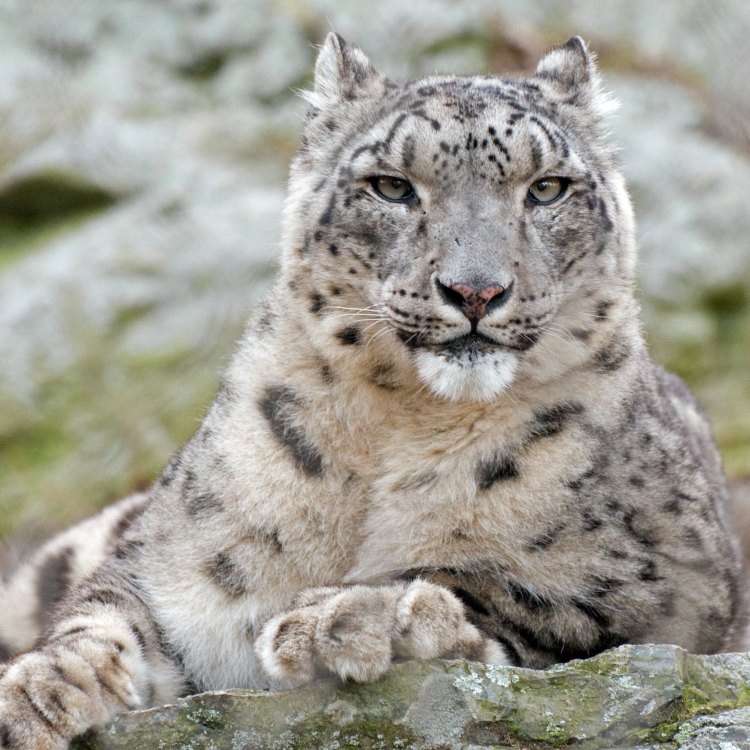
Snow Leopard
- Adult Size: 60 - 120 kg
- Average Lifespan: 10 - 12 years
- Reproduction: Sexual
- Reproductive Behavior: Polygamous
- Sound or Call: Chuffing, growling, and hissing
- Migration Pattern: Altitudinal migration
- Social Groups: Solitary
- Behavior: Nocturnal and crepuscular
- Threats: Habitat loss, poaching, climate change
- Conservation Status: Vulnerable
- Impact on Ecosystem: Key predator in its ecosystem
- Human Use: Hunting, fur trade
- Distinctive Features: Thick fur, long tail, and large paws
- Interesting Facts: Snow leopards are excellent climbers and can leap up to 50 feet in one jump
- Predator: Humans
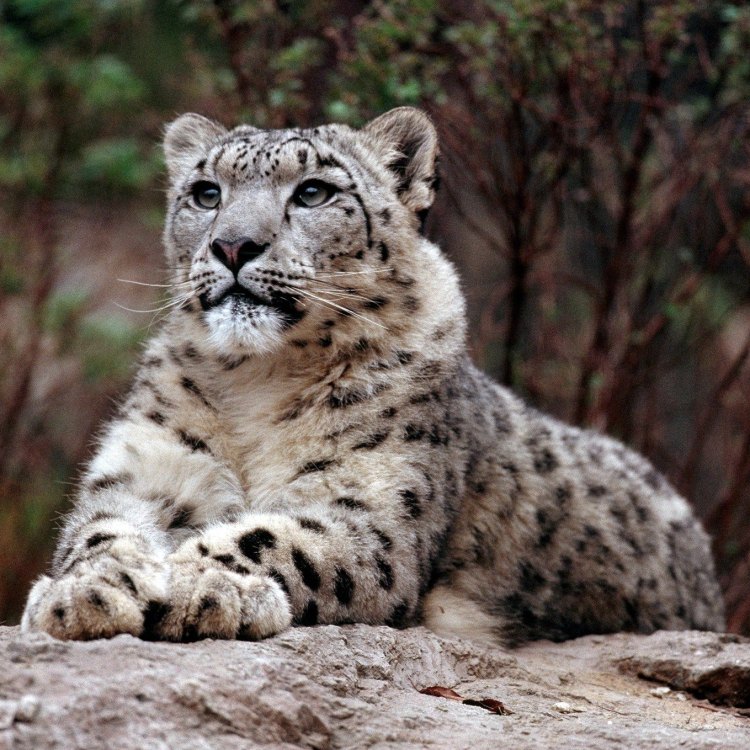
Panthera uncia
The Majestic Snow Leopard: A Threatened Predator of the High Mountains
Amidst the towering peaks of the world's highest mountains, there lies a majestic and elusive creature - the snow leopard. This magnificent feline roams the snowy landscape with grace and stealth, embodying the true spirit of its rugged and harsh habitat.But this iconic predator may soon disappear from its mountain kingdom, as it faces numerous threats that have pushed it to the brink of extinction. Despite being revered by many cultures and worshipped as a symbol of strength and courage, the snow leopard's future is uncertain PeaceOfAnimals.Com.
In this article, we'll delve into the life of the elusive snow leopard, learn about its unique features and behaviors, its impact on the ecosystem, and the threats it faces. Let's explore this enigmatic and endangered species together.
The Elusive Snow Leopard
Snow leopards (Panthera uncia) are found in the high mountains of Central and South Asia, spanning across 12 countries, including Afghanistan, Bhutan, China, India, Kazakhstan, Kyrgyzstan, Mongolia, Nepal, Pakistan, Russia, Tajikistan, and Uzbekistan. They are solitary animals, preferring rugged terrain and remote areas that provide ample cover for hunting.
These elusive felines are known for their striking coat color, which allows them to blend into the snowy landscape seamlessly. Their thick fur varies in shades of smoky gray, with rosette-shaped spots and rings of dark fur on their head and neck. This unique adaptation acts as camouflage, making them nearly invisible to their prey.
The Snow Leopard's Vital Statistics
The average adult size of a snow leopard ranges from 60 to 120 kilograms, with males generally being larger than females. They have a long, bushy tail that helps them maintain balance and acts as insulation in the cold Snowberry Clearwing Moth. Their large paws are also well-adapted to the harsh mountain environment, acting as snowshoes and allowing them to move easily through deep snow.
Snow leopards have an average lifespan of 10 to 12 years in the wild, with the oldest recorded individual reaching 21 years. They reach sexual maturity at around two to three years of age, and their reproductive behavior is polygamous, with one male mating with multiple females within its territory.
The Snow Leopard's Call: A Chuff in the Silent Mountains
These majestic creatures may seem silent and mysterious, but they do communicate through vocalizations. Their sounds or calls include chuffing, growling, and hissing, and they use them to mark their territory and communicate with other leopards. The chuff, a non-threatening vocalization, is most commonly heard during mating season when males are trying to attract females.
The Snow Leopard's Unique Migration Pattern
Unlike other big cats, snow leopards do not have a defined migration pattern. Instead, they exhibit altitudinal migration, moving up and down the mountains in search of food and favorable habitat. In the summer, when the snow melts, they move up to higher elevations, and in winter, they come down to lower altitudes. This allows them to adapt to changes in weather and prey availability.
The Solitary Nature of Snow Leopards
Snow leopards are solitary animals, only coming in contact with other leopards during the mating season. Female snow leopards also raise their cubs alone until they are old enough to hunt and survive on their own. This solitary lifestyle is likely due to the scarce resources and harsh terrain of their mountainous habitat. However, some researchers also believe that this could be an evolutionary adaptation to avoid competition with other predators.
The Behavior of the Snow Leopard: Nocturnal and Crepuscular
Snow leopards are known to be crepuscular and nocturnal, meaning they are most active during dawn and dusk and are also active at night. This behavior allows them to avoid extreme temperatures during the day and hunt under the cover of darkness. Their keen senses, including excellent night vision, help them navigate through the darkness of their mountain home.
The Snow Leopard's Impact on the Ecosystem
Often referred to as the "ghost of the mountains," snow leopards play a crucial role in their ecosystem as a top predator. Their diet mainly consists of wild sheep and goats, such as the Himalayan blue sheep and Siberian ibex, which helps regulate the population of herbivores in their habitat.
By keeping the herbivore population in check, snow leopards indirectly help maintain the balance of the ecosystem. In turn, this also benefits other species, such as birds and smaller mammals that rely on the same food sources. This makes them an essential keystone species, vital for the health and functioning of their habitat.
Threats to the Snow Leopard's Survival
Despite their crucial role in the ecosystem, snow leopards are facing numerous threats that have led to a significant decline in their population. The most pressing threat is habitat loss, as the expansion of human settlements and infrastructure, such as roads and dams, encroaches on their mountainous habitat.
Another major threat is poaching for their fur, which is highly valued and sold on the black market. This cruel practice has led to a decline in their population and has also resulted in the loss of genetic diversity within the species.
Finally, climate change poses a significant threat to snow leopards, as the warming temperatures are causing their mountain habitat to shrink and making it more difficult for them to find prey. This also disrupts their migration patterns and jeopardizes their chances of survival.
Conservation Efforts for the Snow Leopard
The snow leopard's conservation status is listed as vulnerable on the IUCN Red List, with only an estimated 4,000-6,500 individuals remaining in the wild. To protect this iconic species, several organizations and governments have taken measures to conserve their habitat and combat threats.
For instance, the Global Snow Leopard and Ecosystem Protection Program (GSLEP) aims to conserve the snow leopard and its habitat through effective policies, cooperation between governments, and community-based conservation initiatives.
Additionally, many grassroots organizations and local communities are playing a crucial role in protecting snow leopards. For example, the Snow Leopard Trust works with local communities to create sustainable livelihoods that do not harm wildlife and promotes education and awareness about snow leopards.
The Human Use of Snow Leopards: Hunting and Fur Trade
Snow leopards have been hunted and trapped for their fur for centuries, with demand increasing in the early 20th century due to the popularity of fur coats. While hunting is now banned in many countries, illegal poaching still persists, especially in remote areas with weak law enforcement.
Apart from fur, the bones and body parts of snow leopards are also used in traditional medicine and as symbols of wealth and power in some cultures. This has led to increased demand for snow leopard products, further putting pressure on their already dwindling population.
Interesting Facts about Snow Leopards
- Snow leopards are excellent climbers and can leap up to 50 feet in one jump, making them one of the most agile large cats.
- They have wide, furry paws that act as natural snowshoes, allowing them to walk on snow without sinking.
- Even though they are apex predators, snow leopards may occasionally fall prey to larger carnivores such as wolves, bears, and other big cats.
- These felines have a unique way of communicating with other snow leopards - through scent marking. They will spray urine on prominent objects such as rocks and trees to mark their territory and leave scent trails for other leopards to follow.
- It is estimated that there are around 600-700 snow leopards kept in captivity worldwide, representing only a fraction of their wild population.
The Greatest Threat to Snow Leopards: Humans
Despite being formidable hunters and adapted to the harsh conditions of the high mountains, the greatest threat facing snow leopards today is humans. Our expanding infrastructure, unregulated hunting, and climate change pose significant barriers to their survival.
It is up to us, as responsible stewards of the planet, to take action and protect this beautiful species from extinction. We must work together to conserve their habitat, reduce human-wildlife conflict, and eliminate the demand for their fur and body parts. Only by taking collective action can we ensure the survival of the majestic snow leopard for generations to come.
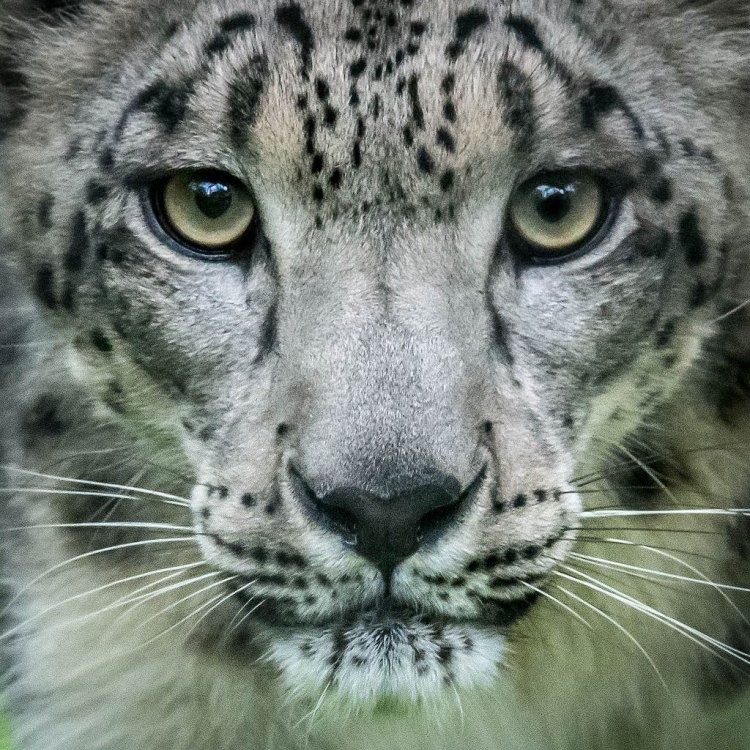
The Elegant and Elusive Snow Leopard: A Majestic Mountain Predator
Disclaimer: The content provided is for informational purposes only. We cannot guarantee the accuracy of the information on this page 100%. All information provided here may change without prior notice.




